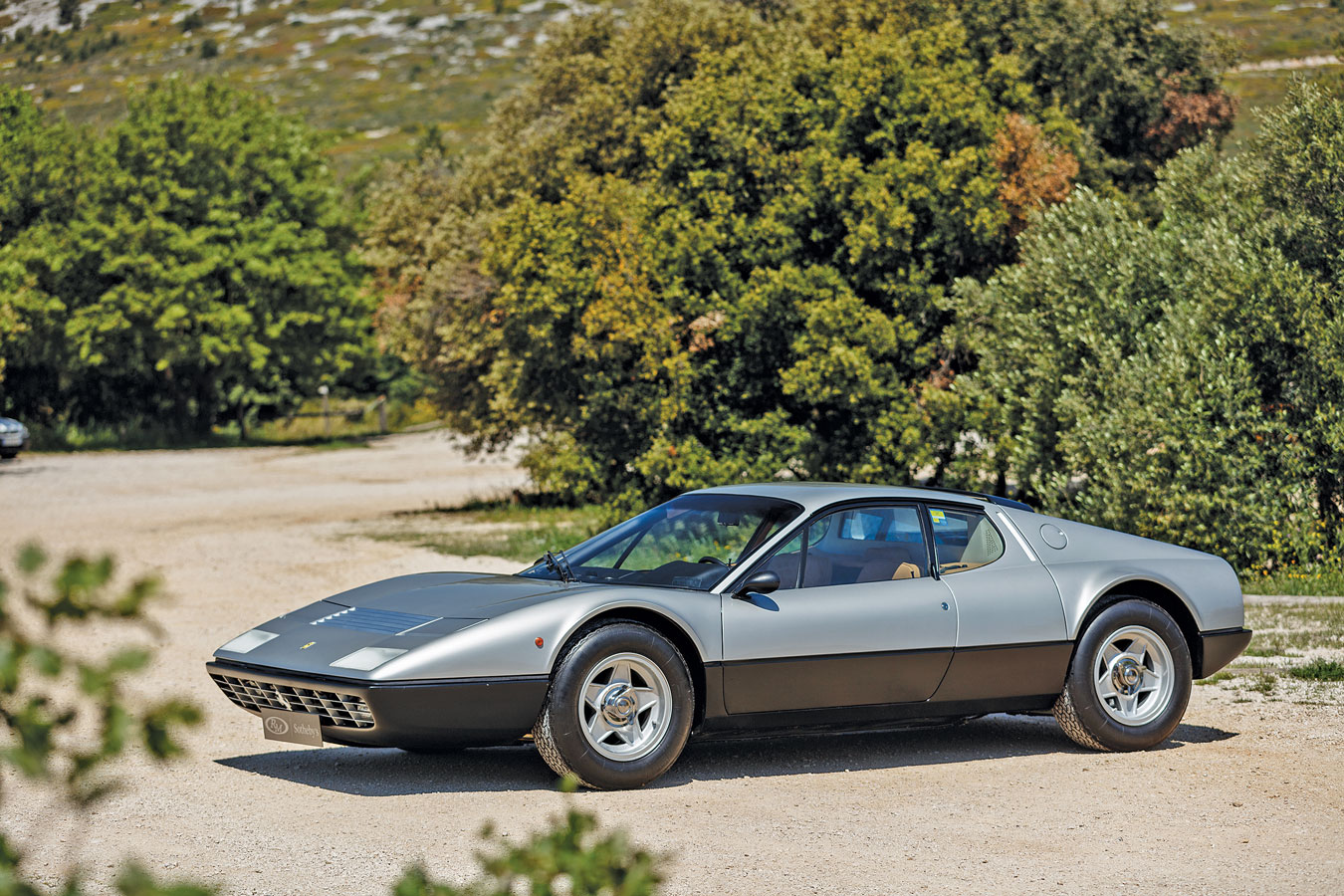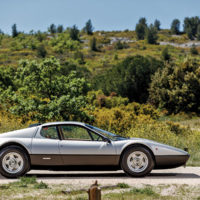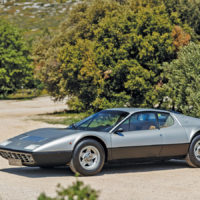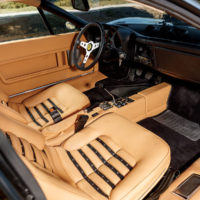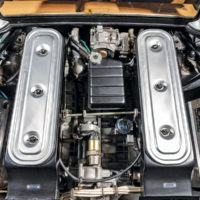SCM Analysis
Detailing
| Vehicle: | 1974 Ferrari 365 GT4 BB |
| Years Produced: | 1974–76 |
| Number Produced: | 367 |
| SCM Valuation: | $312,000 |
| Tune Up Cost: | $12,500 |
| Chassis Number Location: | On frame tube in the engine compartment |
| Engine Number Location: | Top of the block, taillight end |
| Club Info: | Ferrari Club of America |
| Website: | http://www.ferrariclubofamerica.com |
| Alternatives: | 1971–78 Maserati Bora, 1974–76 Lamborghini Countach LP400, 1971–74 DeTomaso Pantera |
| Investment Grade: | B |
This car, Lot 130, sold for $398,712 (€353,750), including buyer’s premium, at the RM Sotheby’s Guikas Collection sale on November 19, 2021.
The 365 GT4 BB, or Berlinetta Boxer, was a significant Ferrari in several ways. It was the first production 12-cylinder mid-engine Ferrari, and the first production Ferrari fitted with a flat, boxer-style engine. In addition, it was the first production Ferrari fitted with cam belts.
Racing tech for the road
The origin story of Ferrari’s Berlinetta Boxer line is well known. As performance car manufacturers were migrating to mid-engine models, Ferrari was sticking with its front-engine 365 GTB/4 Daytona. It is said that Enzo Ferrari felt the performance of a mid-engine 12-cylinder may exceed his clients’ driving capability. Eventually, market and dealer pressure overcame his resistance, and the 365 GT4 BB was born.
Ferrari had migrated to mid-engine sports prototype and Formula One racecars well before it developed the Berlinetta Boxer. The technology was not a problem, but engine placement was. Ferrari wanted to use a variation of its 180-degree-vee Formula One engine. Though the engine was alternately called “flat” or “boxer,” it was not technically a boxer design.
The foremost advantage of the flat engine design is that it lowers the car’s center of gravity. Unfortunately, fitting a transaxle on the back of the engine made the unit too long for the proposed design. The fix was designing a transaxle that would fit underneath the engine, raising the center of gravity but still keeping it lower than a normal vee-type engine.
Sensational and expensive
The 365 Boxer’s 4.4-liter displacement developed 380 hp, about 30 hp more than the Daytona engine. It was enough to move the car to an advertised 186-mph top speed, a number that contemporary road testers found elusive.
As the engine was directly behind the driver, engine noise became a concern. For the first time in a road car, Ferrari replaced the timing chain with rubber belts. The belts reduced the racket but came with the disadvantage of more-frequent maintenance. Expensive scheduled replacement of timing belts became routine on most Ferraris until timing chains were brought back in the F430, some 33 years later.
Pininfarina’s design for the Boxer’s body featured innovative fiberglass bumper covers rather than protruding bumpers. Stylists visually integrated the covers with the body by continuing the top line of the covers with a groove down the center of the car. Pininfarina extended the visual tricks by painting the lower section of the car a satin black. The effect, called “Boxer trim,” optically made the car look lower. This unique treatment did not go over well with customers at the time, and most Boxers were ordered with the lower area painted the same color as the top.
For love or money?
Jean Guikas saw a Ferrari Daytona as a teen. He was so enamored with it that his father bought one. That started Jean on a life of collecting, racing, and eventually, dealing in special cars. Even as a dealer, he claims to only buy cars that he liked, and it shows. Prior to this auction of a major portion of his collection, his inventory consisted of top Ferrari, Maserati and Lamborghini models mixed with exotic race cars, a few Rolls-Royces, and a cool boat or two.
This 365 Boxer appeared to have a well-documented history with owners who knew their way around the Ferrari world. It has been refurbished by top shops and wears a Classiche badge indicating all its major components are original to the car. It still features the original seats with non-adjustable backs, and the original six-tip exhaust system. It is pleasing to see past owners have retained the correct paint trim.
Boxer buyers often purchase for investment over love. If Daytona values start a run, investors are soon chasing Boxers, trying to coattail on the upward trend. If the Daytona market cools, investors leave the market and Boxers become especially difficult to sell. The 365 GT4 model is more resilient to market swings than the later 512 models.
This Boxer comes with a pedigree that any collector would desire. It is a great color, and the condition appears to be excellent. In the red-hot 2014–16 market it would have easily sold in excess of $500,000. More recently, 365 Boxers have been more in the lower $300k range. This sale matched an excellent car with a top-of-the-market buyer. Everybody should be happy. ♦
